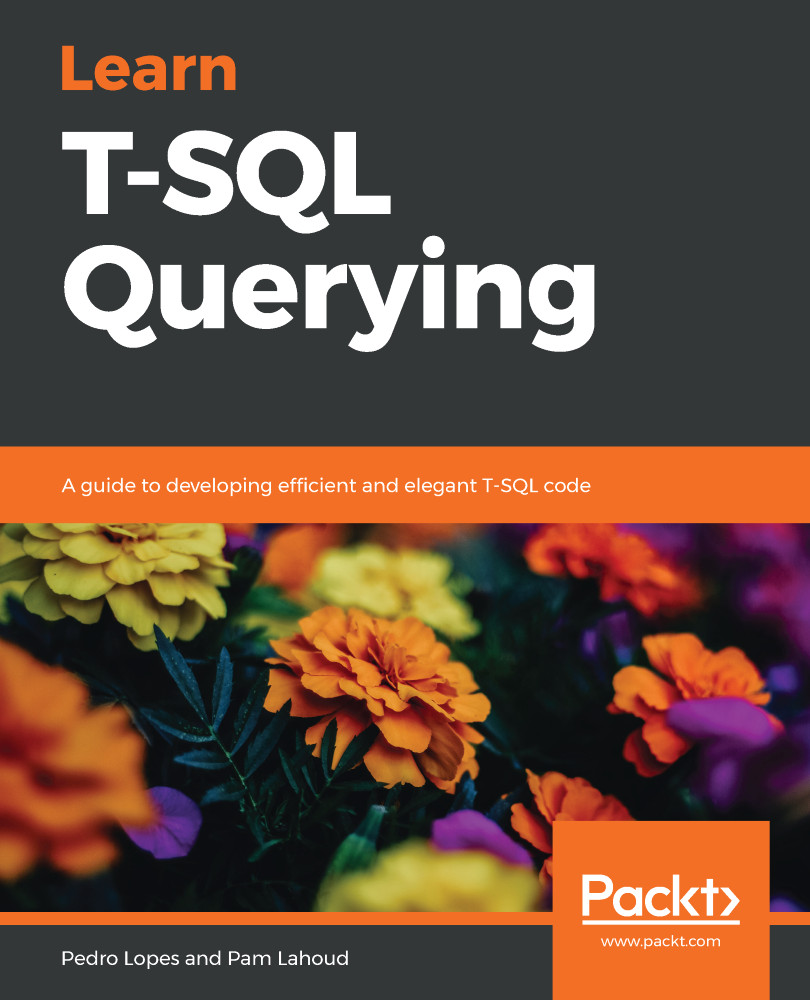Transact-SQL, or T-SQL, as it has come to be commonly known, is the language that is used to communicate with Microsoft SQL Server. Any actions a user wishes to perform in a server, such as retrieving or modifying data in a database, creating objects, changing server configurations, and so on, are all done via a T-SQL command.
In this chapter, we will be introduced to the typical components of a T-SQL statement, including the logical order with which SQL Server processes a statement. This is essential for introducing the reader to why certain query writing patterns work best and to provide a fundamental reference for better understanding the other chapters.
There are four main groups of T-SQL statements that we can have in a Relational Database Management System (RDBMS) like SQL Server:
- Data Control Language statements, also known as DCL, are used to handle...



